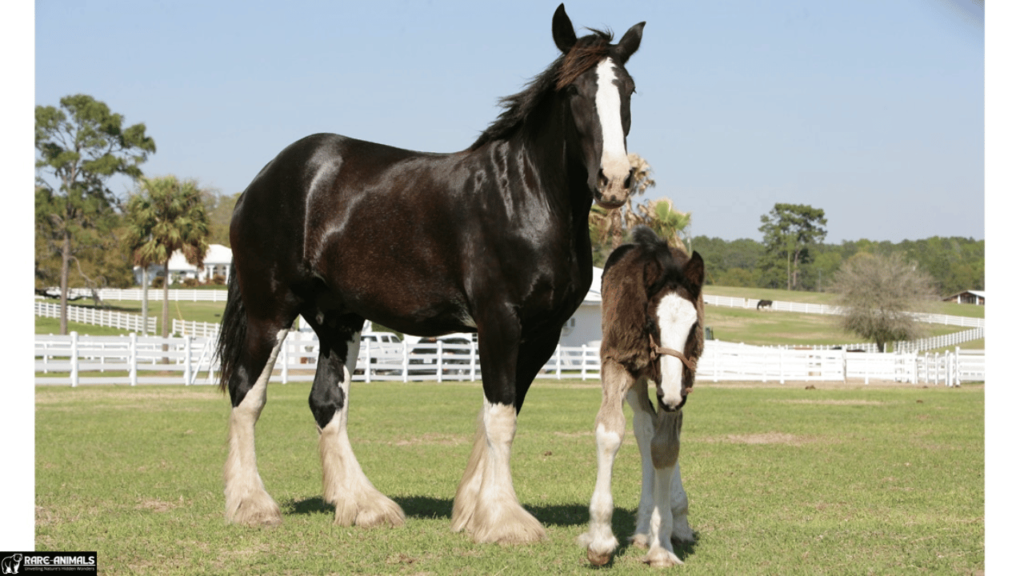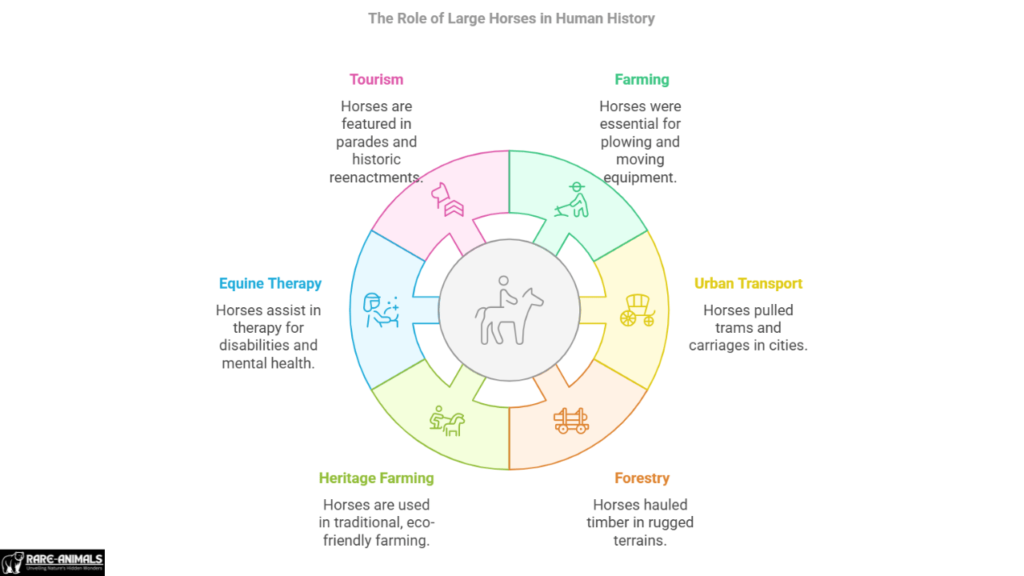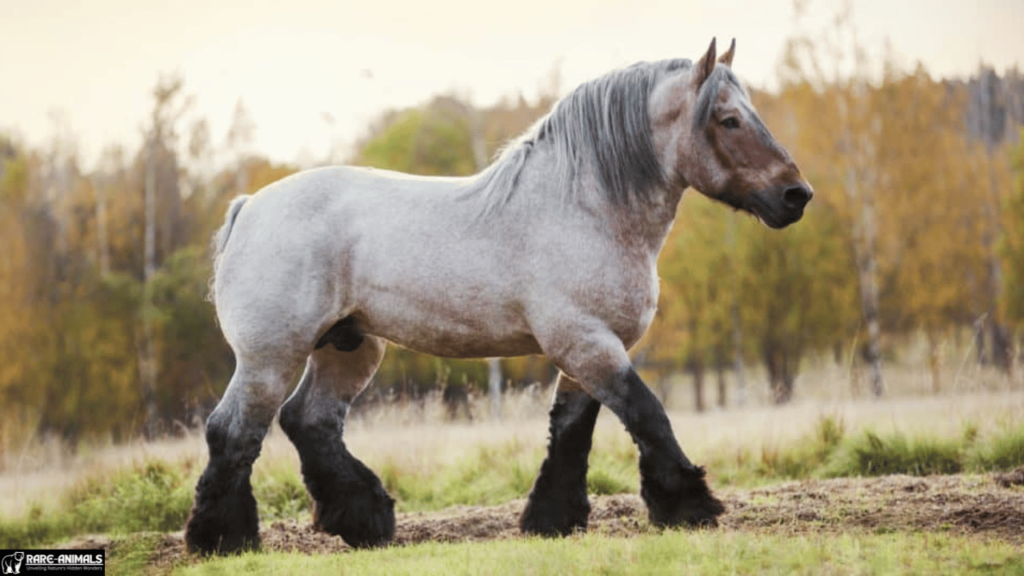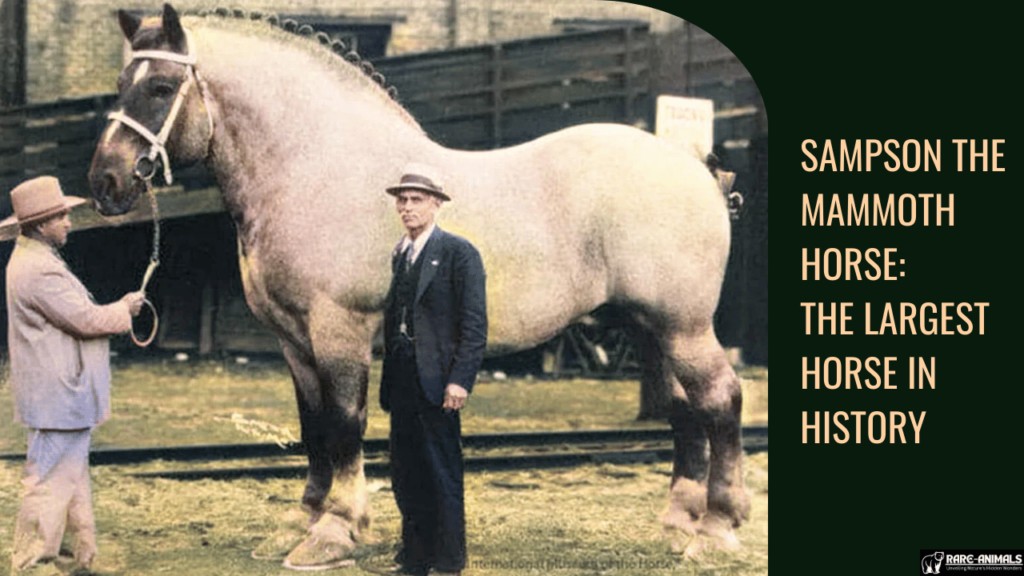Horses have long captivated humanity with their strength, speed, and grace. Among these magnificent creatures, one horse stands above the rest—literally. Sampson, the Mammoth Horse, holds the title of the largest horse in recorded history.
This article explores his fascinating story, his impressive measurements, and the significance of such an extraordinary equine. Whether you’re an animal lover, conservationist, scientist, or adventurer, you’ll find Sampson’s tale both inspiring and informative.
Who Was Sampson the Mammoth Horse?
Sampson, later renamed Mammoth, was a Shire horse born in 1846 in Toddington Mills, England. Bred by Thomas Cleaver, Sampson quickly outgrew even the largest of his equine peers. His sheer size and strength made him a legend in the equestrian world.
Sampson’s Impressive Measurements
- Height: 21.2 hands (7 feet 2 inches or 2.19 meters)
- Weight: Approximately 3,360 pounds (1,524 kg)
- Breed: Shire horse
- Origin: Toddington Mills, Bedfordshire, England
No other horse in history has surpassed Sampson in size, making him an enduring figure in equine history.
The Shire Horse: A Breed Built for Strength
Origins and Characteristics
Shire horses, like Sampson, originated in England and were bred for their immense strength and gentle temperament. They were historically used for:
- Agricultural work: Plowing fields and pulling heavy loads.
- Transport: Pulling carts, especially for breweries and industrial transport.
- Warhorses: In medieval times, Shire horses carried knights in full armor.

Physical Traits
Shire horses are known for their powerful build, feathered legs, and broad chests. Their average height ranges from 16 to 18 hands, but Sampson far exceeded these norms.
Why Was Sampson So Large? The Science of Equine Growth
Sampson’s extraordinary size can be attributed to genetics, diet, and selective breeding.
Factors Influencing Horse Growth
- Genetics: Shire horses are one of the largest horse breeds, and Sampson likely inherited dominant size genes.
- Nutrition: A rich, well-balanced diet can maximize growth potential.
- Selective Breeding: Over centuries, breeders have selected larger horses to reinforce desirable traits.
While Sampson was an extreme case, his size showcases the upper limits of equine growth.

The Role of Large Horses in Human History
Work and Transportation
Before mechanization, large draft horses like Sampson played a crucial role in agriculture and transportation. They were indispensable in:
- Farming: Plowing fields and moving heavy equipment.
- Urban transport: Pulling trams, carts, and carriages.
- Forestry: Hauling timber in rugged terrains.
Conservation and Modern-Day Uses
Though machinery has replaced horses in many industries, Shire horses still have important roles today:
- Heritage farming and eco-friendly agriculture.
- Equine therapy for people with disabilities or mental health conditions.
- Tourism and ceremonial roles in parades and historic reenactments.

The Legacy of Sampson the Mammoth Horse
Sampson remains a symbol of equine greatness. His legacy continues to inspire:
- Horse breeders aiming to preserve and improve draft horse breeds.
- Equestrians and historians fascinated by record-breaking horses.
- Animal lovers who appreciate the beauty and power of horses.

Honoring Sampson Today
Although Sampson lived in the 19th century, his story endures. Today, horse lovers can visit museums and historical records that celebrate him.
His influence also highlights the importance of preserving large horse breeds for future generations.
Conclusion
Sampson the Mammoth Horse was a true giant in the equine world. His unmatched size and strength cemented his place in history as the largest horse ever recorded.
Whether as a historical marvel or a reminder of the incredible diversity of horse breeds, Sampson’s story continues to captivate and educate animal lovers, researchers, and conservationists alike.
FAQs
1. What was the biggest horse in history?
Sampson, later named Mammoth, holds the record as the largest horse ever, standing 21.2 hands tall and weighing around 3,360 pounds.
2. What breed was Sampson the horse?
Sampson was a Shire horse, a breed known for its immense size and strength.
3. Are there horses as big as Sampson today?
While some Shire and Clydesdale horses grow to impressive sizes, none have surpassed Sampson’s record.
4. Why did Sampson grow so large?
His size was likely due to a combination of genetics, selective breeding, and a well-balanced diet.
5. How are Shire horses used today?
They are mainly used in heritage farming, equine therapy, tourism, and ceremonial roles.
Sampson’s story is a testament to the marvels of nature and the enduring bond between humans and horses. Share this article with fellow horse enthusiasts and help keep his legend alive!

Alveena is an experienced content writer with a knack for crafting engaging and insightful pieces. She thrives on breaking down complex ideas and presenting them as clear, captivating content that resonates with readers.







